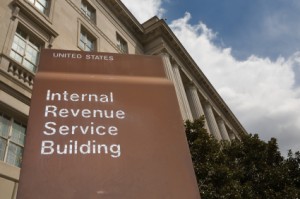If your mortgage debt is partly or entirely forgiven during tax years 2007 through 2012, you may be able to claim special tax relief and exclude the debt forgiven from your income. Here are 10 facts the IRS wants you to know about mortgage debt forgiveness.
 1. Normally, debt forgiveness results in taxable income. However, under the Mortgage Forgiveness Debt Relief Act of 2007, you may be able to exclude up to $2 million of debt forgiven on your principal residence.
1. Normally, debt forgiveness results in taxable income. However, under the Mortgage Forgiveness Debt Relief Act of 2007, you may be able to exclude up to $2 million of debt forgiven on your principal residence.
2. The limit is $1 million for a married person filing a separate return.
3. You may exclude debt reduced through mortgage restructuring as well as mortgage debt forgiven in a foreclosure.
4. To qualify, the debt must have been used to buy, build, or substantially improve your principal residence and be secured by that residence.
5. Refinanced debt proceeds used for the purpose of substantially improving your principal residence also qualify for the exclusion.
6. Proceeds of refinanced debt used for other purposes – for example, to pay off credit card debt – do not qualify for the exclusion.
7. If you qualify, claim the special exclusion by filling out Form 982, Reduction of Tax Attributes Due to Discharge of Indebtedness, and attach it to your federal income tax return for the tax year in which the qualified debt was forgiven.
8. Debt forgiven on second homes, rental properties, business properties, credit cards, or car loans does not qualify for the tax relief provision. In some cases, however, other tax relief provisions – such as insolvency – may be applicable. IRS Form 982 provides more detail about these provisions.
9. If your debt is reduced or eliminated you normally will receive a year-end statement, Form 1099-C, Cancellation of Debt, from your lender. By law, this form must show the amount of debt forgiven and the fair market value of any foreclosed property.
10. Examine the Form 1099-C carefully. Notify the lender immediately if any of the information shown is incorrect. You should pay particular attention to the amount of debt forgiven in Box 2 as well as the value listed for your home in Box 7.
For more information about the Mortgage Forgiveness Debt Relief Act of 2007, visit IRS.gov. A good resource is IRS Publication 4681, Canceled Debts, Foreclosures, Repossessions and Abandonments. Taxpayers may obtain a copy of this publication and Form 982 either by downloading them from IRS.gov or by calling 800-TAX-FORM (800-829-3676).
Tisha Black Chernine, Esq.
 It seems everyone communicates by email these days, even many government agencies. Many people do not give it a second thought when they receive an email from the IRS stating that the agency wants some more information. But those people would be wrong to trust that email, because the IRS does not communicate with taxpayers by email! These emails are a “phishing” scam that seeks to obtain personal information from the taxpayer. The criminals that perpetuate these schemes use the information to commit several different types of crimes – they may use your social security number for identity theft, they may access your bank account and transfer money to their own accounts or they may file a tax return using your name and false information to request a big refund check.
It seems everyone communicates by email these days, even many government agencies. Many people do not give it a second thought when they receive an email from the IRS stating that the agency wants some more information. But those people would be wrong to trust that email, because the IRS does not communicate with taxpayers by email! These emails are a “phishing” scam that seeks to obtain personal information from the taxpayer. The criminals that perpetuate these schemes use the information to commit several different types of crimes – they may use your social security number for identity theft, they may access your bank account and transfer money to their own accounts or they may file a tax return using your name and false information to request a big refund check. While many taxpayers get a refund from the Internal Revenue Service each year, there are those who owe. Furthermore, some taxpayers are unable to pay the tax all at once. Therefore, the IRS has announced a campaign to an effort to help struggling taxpayers get a fresh start with their tax liabilities.
While many taxpayers get a refund from the Internal Revenue Service each year, there are those who owe. Furthermore, some taxpayers are unable to pay the tax all at once. Therefore, the IRS has announced a campaign to an effort to help struggling taxpayers get a fresh start with their tax liabilities.

 An inside liability comes from assets owned by the company or from behavior performed by the company. These liabilities are trying to get up and out to your personal assets. An outside liability, on the other hand, comes from assets owned by you, individually, or from your individual behavior. These liabilities are trying to get down and in to your company.
An inside liability comes from assets owned by the company or from behavior performed by the company. These liabilities are trying to get up and out to your personal assets. An outside liability, on the other hand, comes from assets owned by you, individually, or from your individual behavior. These liabilities are trying to get down and in to your company. 



 Recently we were asked if a single-member limited liability company (LLC) has to get a new EIN after it hired an employee. Again we provide the typical lawyer’s answer, which is “it depends.” The Internal Revenue Service (IRS) rules regarding this situation are as follows:
Recently we were asked if a single-member limited liability company (LLC) has to get a new EIN after it hired an employee. Again we provide the typical lawyer’s answer, which is “it depends.” The Internal Revenue Service (IRS) rules regarding this situation are as follows:
